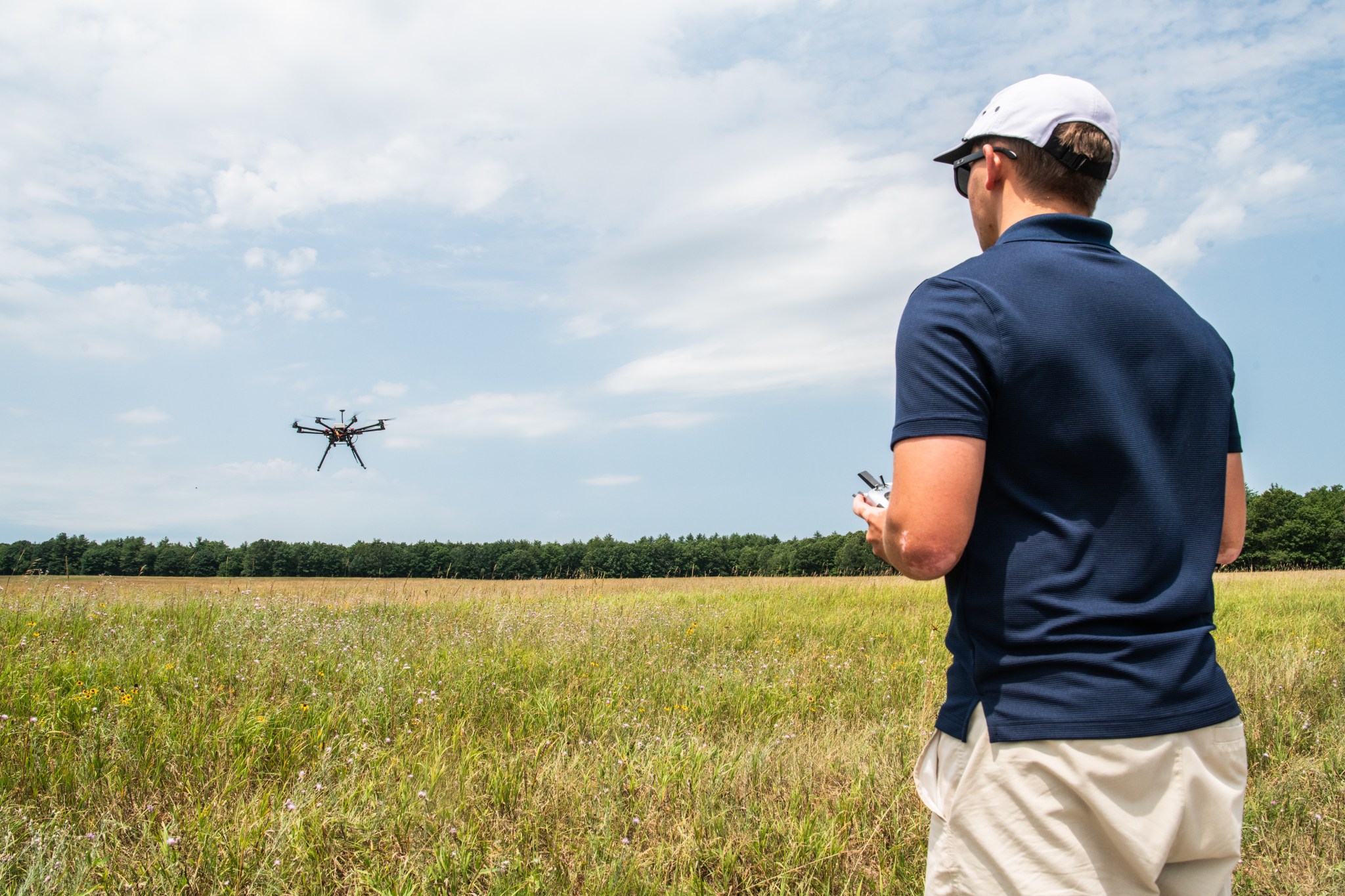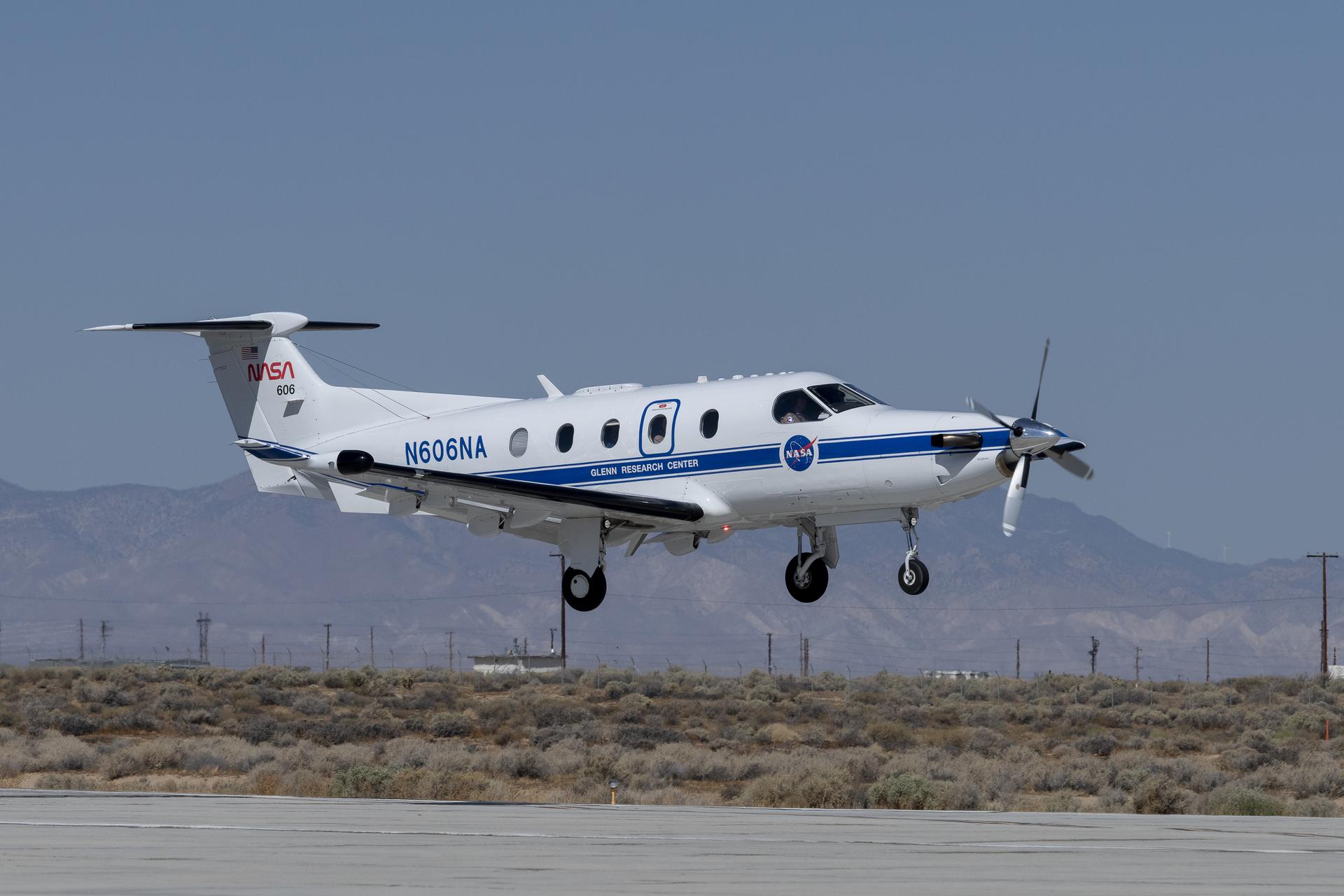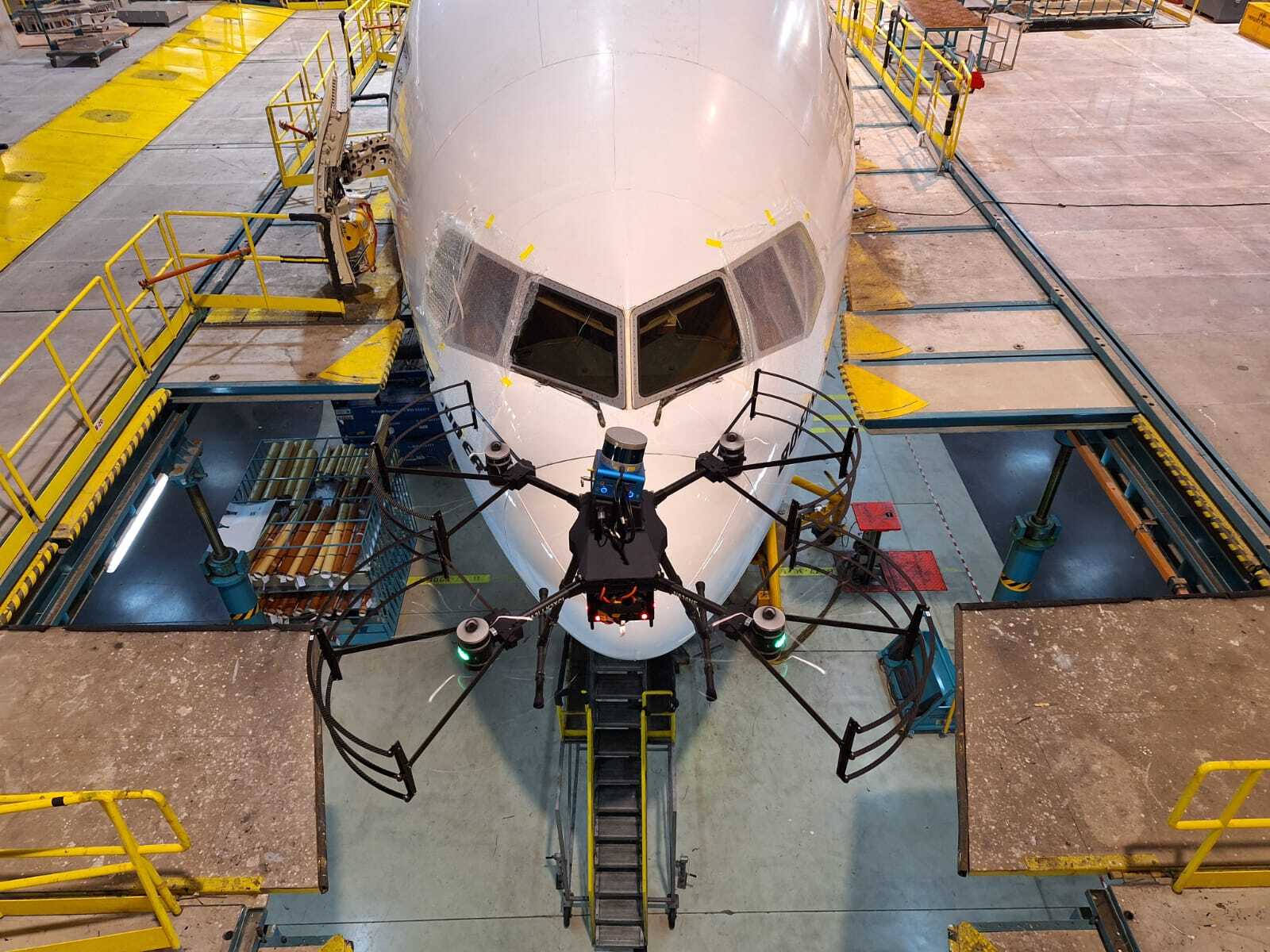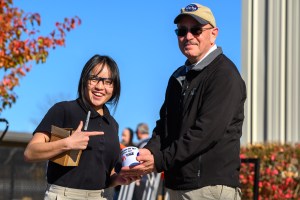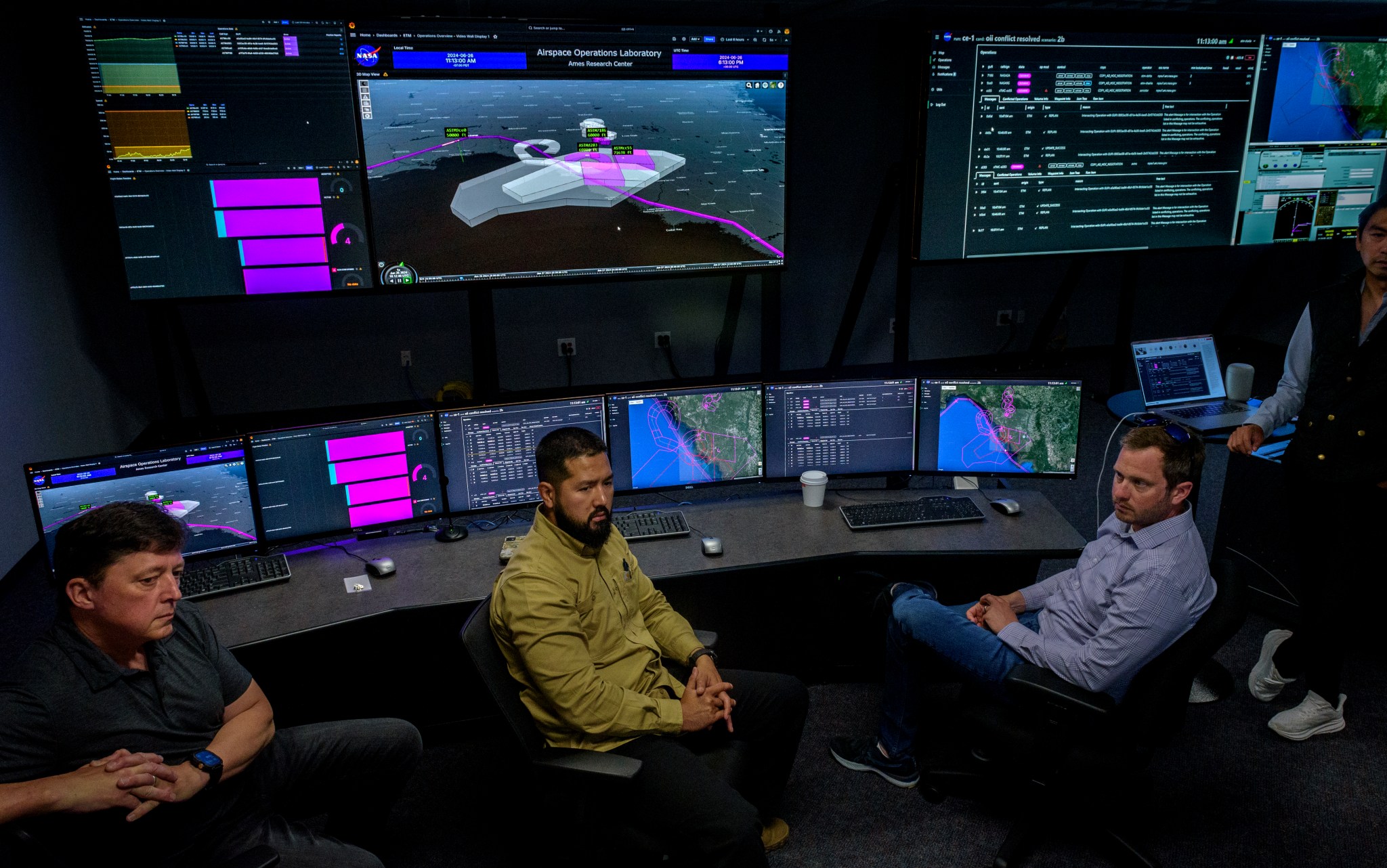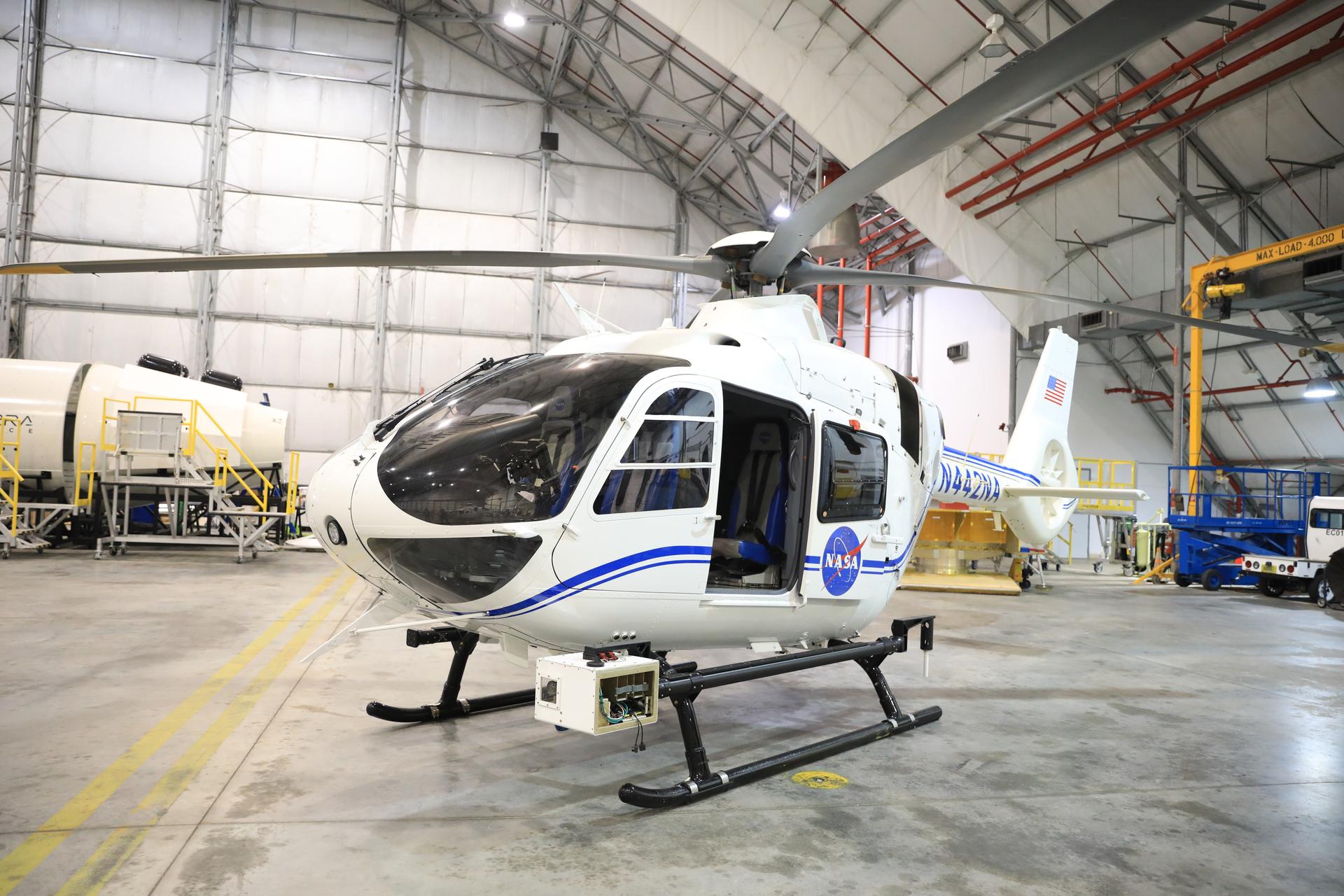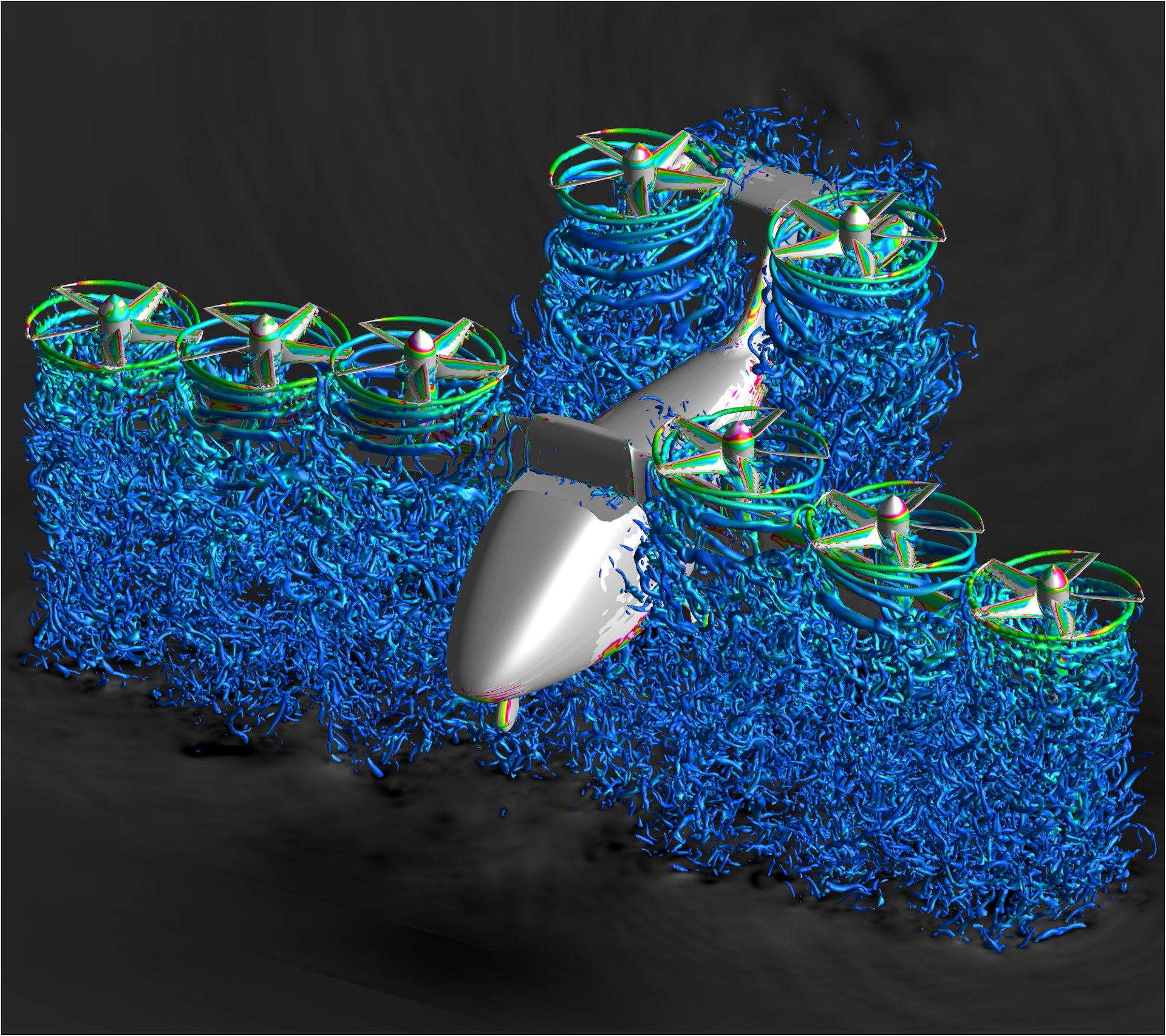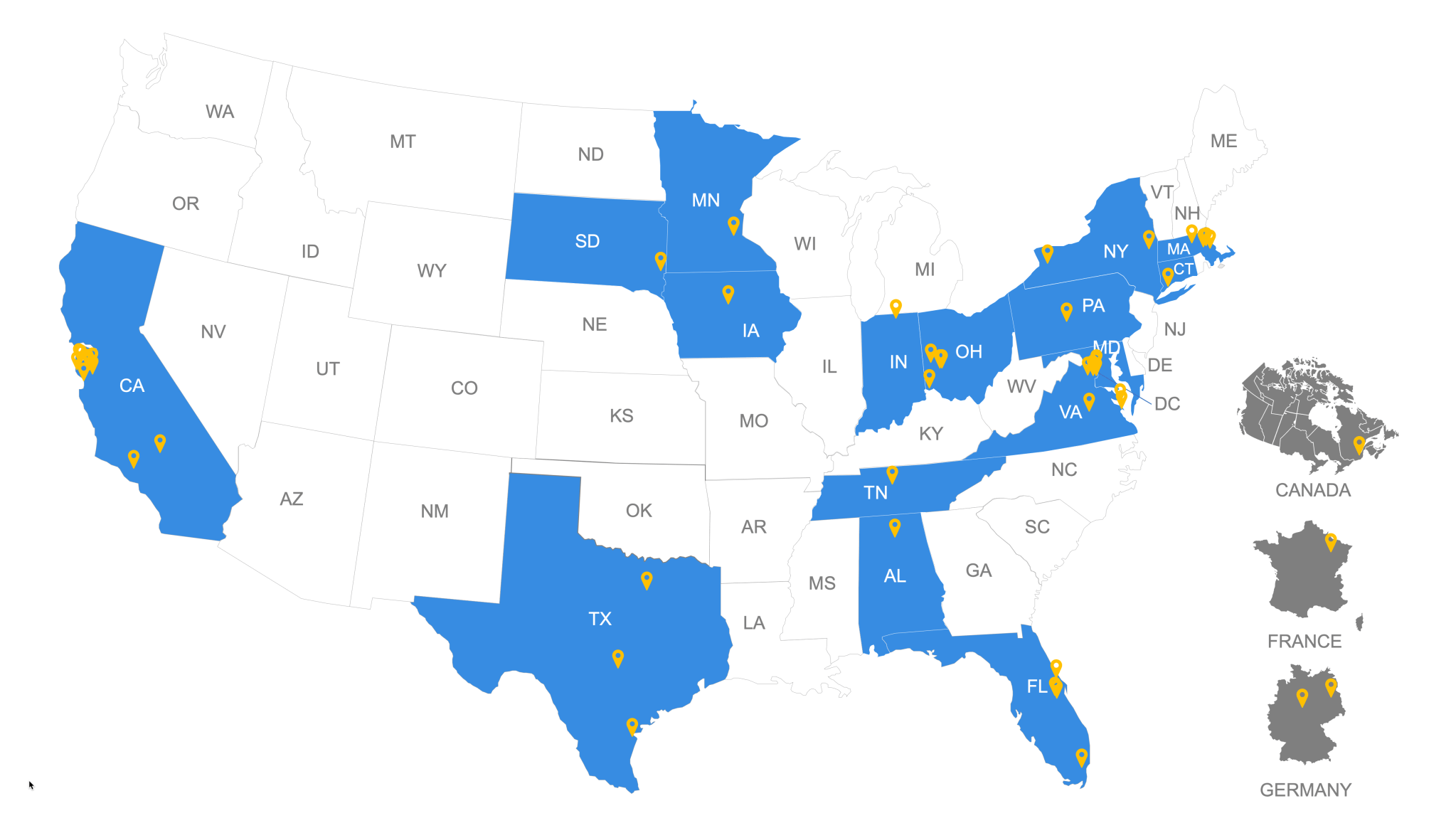3 min read Preparations for Next Moonwalk Simulations Underway (and Underwater) One of several NASA distributed sensing ground nodes is set up in the foreground while an experimental air taxi aircraft owned by Joby Aviation sits in the background near NASA’s Armstrong Flight Research Center in Edwards, California, on March 12, 2025. NASA is collecting information during this study to help advance future air taxi flights, especially those occurring in cities, to track aircraft moving through traffic corridors and around landing zones. NASA/Genaro Vavuris NASA engineers began using a network of…
Read MoreTag: Advanced Air Mobility
NASA Makes Progress on Advanced Drone Safety Management System
4 min read Preparations for Next Moonwalk Simulations Underway (and Underwater) A Massachusetts Institute of Technology Lincoln Laboratory pilot controls a drone during NASA’s In-Time Aviation Safety Management System test series in collaboration with a George Washington University team July 17-18, 2024, at the U.S. Army’s Fort Devens in Devens, Massachusetts. MIT Lincoln Laboratory/Jay Couturier From agriculture and law enforcement to entertainment and disaster response, industries are increasingly turning to drones for help, but the growing volume of these aircraft will require trusted safety management systems to maintain safe operations.…
Read MoreNASA Tests Air Traffic Surveillance Technology Using Its Pilatus PC-12 Aircraft
3 min read Preparations for Next Moonwalk Simulations Underway (and Underwater) Equipped with state-of-the-art technology to test and evaluate communication, navigation, and surveillance systems NASA’s Pilatus PC-12 performs touch-and-go maneuvers over a runway at NASA’s Armstrong Flight Research Center in Edwards, California on Sept. 23, 2024. Researchers will use the data to understand Automatic Dependent Surveillance-Broadcast (ADS-B) signal loss scenarios for air taxi flights in urban areas. To prepare for ADS-B test flights pilots and crew from NASA Armstrong and NASA’s Glenn Research Center in Cleveland, ran a series of…
Read MoreNASA Small Business Funding Enables Aircraft Inspection by Drone
3 min read Preparations for Next Moonwalk Simulations Underway (and Underwater) A Boeing 777-300ER aircraft is being inspected by one of Near Earth Autonomy’s drones Feb. 2, 2024, at an Emirates Airlines facility in Dubai, United Arab Emirates. Near Earth Autonomy A small business called Near Earth Autonomy developed a time-saving solution using drones for pre-flight checks of commercial airliners through a NASA Small Business Innovation Research (SBIR) program and a partnership with The Boeing Company. Before commercial airliners are deemed safe to fly before each trip, a pre-flight inspection…
Read More2024: NASA Armstrong Prepares for Future Innovative Research Efforts
4 min read Preparations for Next Moonwalk Simulations Underway (and Underwater) NASA/Quincy Eggert NASA’s Armstrong Flight Research Center in Edwards, California, is preparing today for tomorrow’s mission. Supersonic flight, next generation aircraft, advanced air mobility, climate changes, human exploration of space, and the next innovation are just some of the topics our researchers, engineers, and mission support teams focused on in 2024. NASA Armstrong began 2024 with the public debut of the X-59 quiet supersonic research aircraft. Through the unique design of the X-59, NASA aims to reduce the sonic…
Read MoreNASA and Partners Scaling to New Heights
3 min read Preparations for Next Moonwalk Simulations Underway (and Underwater) NASA and partners from Aerostar and AeroVironment discuss a simulation of a high-altitude air traffic management system for vehicles flying 60,000 feet and above in the Airspace Operations Lab (AOL) at NASA’s Ames Research Center in California’s Silicon Valley. NASA/Don Richey NASA, in partnership with AeroVironment and Aerostar, recently demonstrated a first-of-its-kind air traffic management concept that could pave the way for aircraft to safely operate at higher altitudes. This work seeks to open the door for increased internet…
Read MoreNASA Develops Pod to Help Autonomous Aircraft Operators
The NASA Airborne Instrumentation for Real-world Video of Urban Environments (AIRVUE) sensor pod is attached to the base of a NASA helicopter at NASA’s Kennedy Space Center in Cape Canaveral, Florida in April 2024 before a flight to test the pod’s cameras and sensors. The AIRVUE pod will be used to collect data for autonomous aircraft like air taxis, drones, or other Advanced Air Mobility aircraft. NASA/Isaac Watson For self-flying aircraft to take to the skies, they need to learn about their environments to avoid hazards. NASA aeronautics researchers recently…
Read MoreNASA Noise Prediction Tool Supports Users in Air Taxi Industry
1 min read Preparations for Next Moonwalk Simulations Underway (and Underwater) The results from a NASA software tool called OVERFLOW, used to model the flow of air around aircraft, are shown in this image. NASA Several air taxi companies are using a NASA-developed computer software tool to predict aircraft noise and aerodynamic performance. This tool allows manufacturers working in fields related to NASA’s Advanced Air Mobility mission to see early in the aircraft development process how design elements like propellors or wings would perform. This saves the industry time and…
Read MoreNASA Advanced Air Mobility Partnerships
12 min read Preparations for Next Moonwalk Simulations Underway (and Underwater) NASA is partnered with other government agencies, industry, and academia to conduct Advanced Air Mobility (AAM) research to benefit a future transportation system with routine flight of air taxis and drones. See the current partnerships below and in the map above. AerostarSioux Falls, South DakotaNASA and Aerostar are conducting collaborative evaluation of a NASA prototype simulated Upper Class E Traffic Management (ETM) system. AeroVironmentSimi Valley, CaliforniaNASA and AeroVironment are conducting research, development, testing, and evaluation of a NASA prototype…
Read MoreNASA Flies Drones Autonomously for Air Taxi Research
3 min read Preparations for Next Moonwalk Simulations Underway (and Underwater) An Alta-8 small Unmanned Aircraft System testbed vehicle flies above NASA’s Langley Research Center in Hampton, Virginia. Flying beyond visual line of sight from observers on the ground required special approval from the Federal Aviation Administration and NASA. NASA / Bowman Researchers at NASA’s Langley Research Center in Hampton, Virginia recently flew multiple drones beyond visual line of sight with no visual observer. The drones successfully flew around obstacles and each other during takeoff, along a planned route, and…
Read More